Featured in the Film
Split Estate is an intimate conversation with average Western people trying to cope in the face of a life-shattering interruption beyond their control.
Along with the families on the frontlines, the film also features industry reps from the high-stakes business of oil and gas drilling; the political leaders working to stem the tide; the civil servants dedicated to upholding the letter of the law; and the environmental health experts piecing it all together.
The following individuals are listed alphabetically.

Laura Amos
Laura Amos is the proverbial canary in the coalmine. In 2001, the EnCana Corporation drilled four gas wells less than 1,000 feet from the Amos family home in Silt, Colorado, using hydraulic fracturing. The drilling breached their water well, causing their drinking water to fill with gray sediment and fizz like soda pop.
By 2003, Laura had become very ill, and was diagnosed with primary
Hyper Aldosteronism — a rare condition involving a tumor in the adrenal gland that affects the thyroid and pituitary glands. In 2004, Laura embarked upon her first letter-writing campaign when she discovered that 2-butoxyethanol, known as 2-BE, had been used in the 2001 fracturing. It is only the beginning of a journey to reclaim her health and her rights.
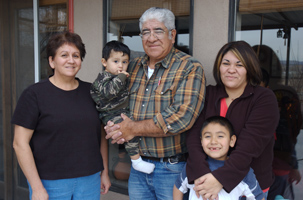
Gilbert Armenta
Gilbert Armenta is a fifth generation Hispanic and Native American (Cochiti) rancher living with the industry in his backyard for more than half a century in Bloomfield, New Mexico.
After struggling for years to protect his ranch and family, things get even worse. A drilling boom accelerates the number of wells going in on his property. One day, Gilbert comes home to find a port-a-potty and a huge pile of gravel on top of a small cemetery near his house where his great grandfather and 8 other family members are buried.

Lance Astrella
Lance Astrella is a veteran oil and gas lawyer who spent the first 20 years of his career representing the industry. In the last decade, this former insider has found himself on the other side of the fence, fighting industry on behalf of consumers, municipalities, landowners and citizens in an effort to balance the need for domestic fossil fuel with environmental sustainability.
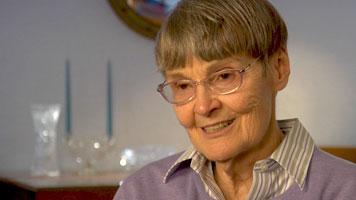
Dr. Theo Colborn
Honored by Time Magazine as a 2007 global Environmental Hero, Dr. Theo Colborn is Professor Emeritus at the University of Florida, Gainesville, and President of The Endocrine Disruption Exchange (TEDX, Inc) in Paonia, Colorado. She is the author of numerous scientific publications about compounds that interfere with hormones and other chemical messengers that control development in wildlife and humans. Her incisive research has demonstrated that endocrine disrupting chemicals alter development of the fetus in the womb by interfering with the natural hormonal signals directing fetal growth. She is co-author of the groundbreaking 1996 book Our Stolen Future with Dianne Dumanoski and J. Peterson Myers. Her work has prompted the enactment of new laws around the world and redirected the research of academicians, governments, and the private sector. Most recently, Dr. Colborn was awarded the Swedish Goteborg Prize for the Environment and Sustainability.
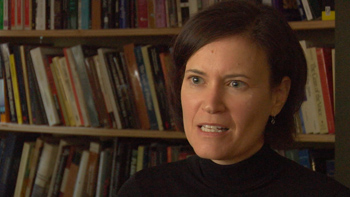
Amy Mall
Amy Mall is a Senior Policy Analyst with the Land Program at the Natural Resources Defense Council (NRDC). NRDC’s Land Program is dedicated to protecting our nation’s wildest places and most valuable wildlife habitat from irresponsible industrial development. Based in Boulder, Colorado, Mall’s work is focused on protecting sensitive lands in the Rocky Mountain region from harmful oil and gas operations, and on advancing public policies to require more environmentally friendly oil and gas operations where the industry does drill. She is the principal author of the 2007 NRDC report, Drilling Down: Protecting Western Communities from the Health and Environmental Effects of Oil and Gas Production.
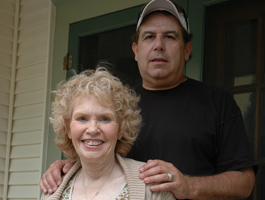
Chris and Steve Mobaldi
Chris and Steve Mobaldi leave California to follow their dreams, settling in Rifle, Colorado. Drilling in their neighborhood begins shortly after they arrive and soon there are about 20 wells within a mile of their home, as well as an unlined disposal pit that burns and flares a few hundred feet from their front door.
Chris and Steve both begin experiencing symptoms, and their dreams begin to unravel as Chris’ health problems grow more severe and debilitating over time.
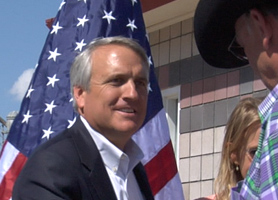
Governor Bill Ritter, Jr.
Bill Ritter, Jr. was elected as Colorado's 41st governor in 2006 and has been proactive in establishing Colorado as a national and international leader in renewable energy.
In August 2008, he filed a protest against leasing the Roan Plateau for natural gas development — one of some 15,000 protests against the Bureau of Land Management’s controversial plan to lease the top of the plateau. The Roan Plateau in northwest Colorado becomes the flash point of a volatile debate between industry interests and a coalition calling for the protection of wildlife-rich areas from the fossil fuel extraction boom.
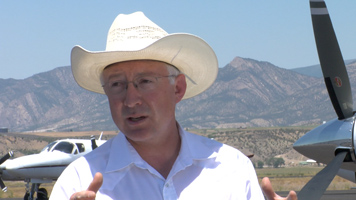
Ken Salazar
Ken Salazar, a fifth generation Coloradan, was confirmed as the 50th Secretary of the U.S. Department of the Interior on January 20, 2009, in a unanimous vote by the U.S. Senate. Prior to his confirmation, Salazar served as Colorado's 35th United States Senator, winning election in November 2004.
As a U.S. Senator, Salazar was a leader creating and implementing a vision for a renewable energy economy less dependent on foreign oil. He was involved in every major bipartisan legislative effort on energy since 2005, including helping craft the Renewable Fuels, Consumer Protection, and Energy Efficiency Act of 2007.
In 2008, along with Governor Bill Ritter, Salazar sought to limit drilling on the Roan Plateau and to enact environmental safeguards.
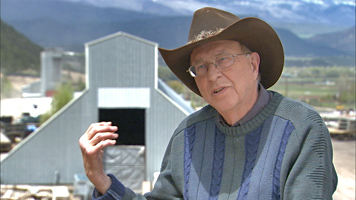
Daniel Thau Teitelbaum
Daniel Thau Teitelbaum, M.D., is Adjunct Professor of Occupational and Environmental Health at the Colorado School of Public Health, and Adjunct Professor of Environmental Sciences at the Colorado School of Mines. Practicing as an occupational toxicologist for more than forty years in Denver, he has frequently consulted for United States Occupational Safety and Health Administration, and participated in the development of many of the current OSHA Standards including the Hazard Communication Standard, the Lead Standard, the Benzene Standard and others. He has also consulted for the Environmental Protection Agency and the State of Colorado.
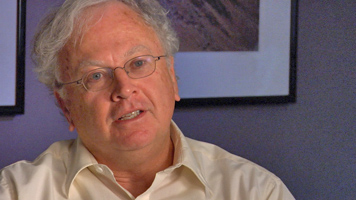
Weston Wilson
In October 2004, Weston Wilson, an environmental engineer and a 32-year veteran of the Environmental Protection Agency, filed a statement seeking whistle-blower protection from Congress. The 18-page statement blew the lid off an EPA study that had concluded that there was no evidence that hydraulic fracturing posed a threat to drinking water.
EPA produced a final report, "... that I believe is scientifically unsound and contrary to the purposes of the law," Weston Wilson wrote to lawmakers. He went on to argue that the agency review of the safety of the drilling technique did not use established agency standards and relied on a peer review panel dominated by energy industry personnel.
His claims were first reported by the Los Angeles Times and came under review by the EPA's inspector general until the investigation was dropped and Inspector General Nikki Tinsley, a Clinton appointee, gave her resignation shortly thereafter.











